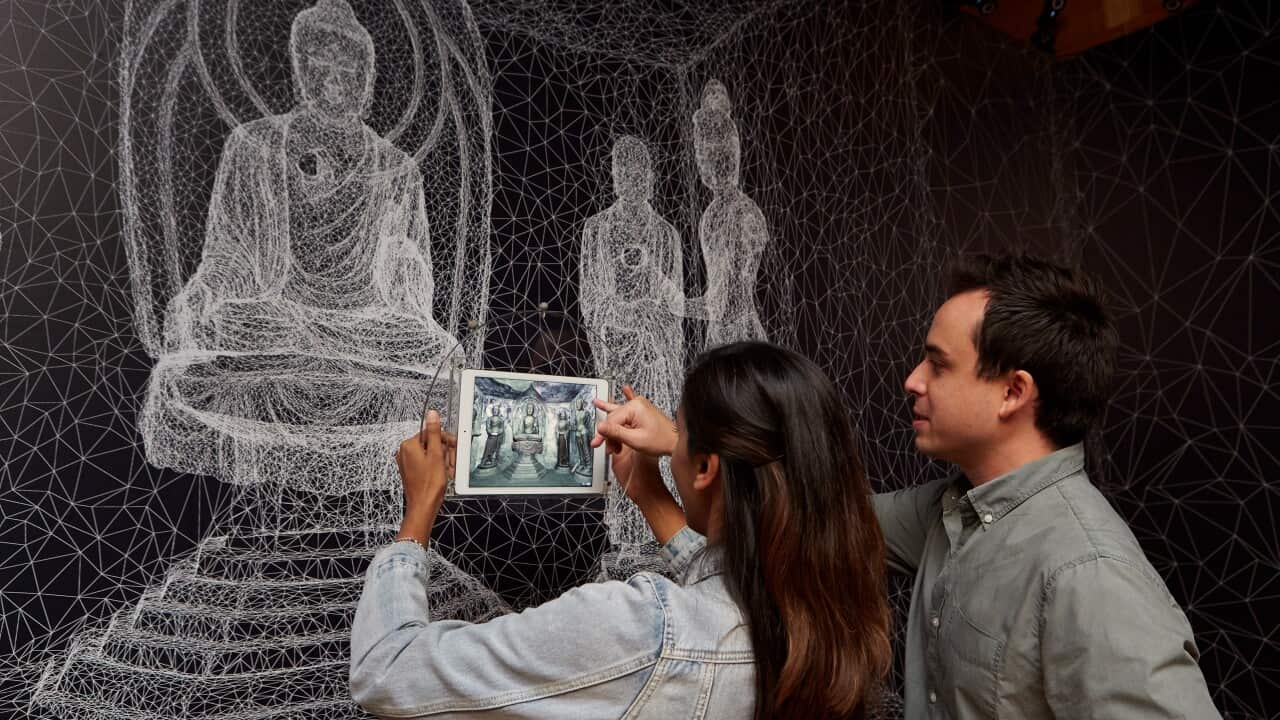Tang: treasures from the Silk Road capital features a wondrous array of rare gold, silver and glass artefacts as well as ceramics, sculptures and mural paintings from the Tang Empire, many of which are national treasures of China and attesting to their great cultural significance, some of the 135 objects have never before been exhibited outside China. Art Gallery of New South Wales director Dr Michael Brand said the Gallery is extremely privileged to host such an extensive range of precious Chinese treasures.
“For the first time, Australian audiences are able to appreciate the high artistic achievements and rich history of this golden age of China as Tang: treasures from the Silk Road capital opens at the Art Gallery of New South Wales.
“Tang is the third exhibition from the Shaanxi Province to be held at the Gallery following the very successful Qinshihuang’s terracotta warriors and horses in 1983 and The First Emperor: China’s entombed warriors in 2010-11,” Brand said.
“There are many people to thank for making this exhibition possible, but in particular I wish to thank Cheng Jianzheng, former director of the Shaanxi History Museum, whose meeting with me in Sydney in 2012 was not only the inspiration for this exceptional project, but the first meeting I had with an international museum director after I started at the Gallery,” Brand added.
While Europe was still in the Dark Ages the Tang Empire (618-907) became the richest and most powerful realm in the world. At the heart of the Tang Empire was its capital city, Chang’an (present day Xi’an). Home to one million people and situated at the start of the famous Silk Road trade route, this cosmopolitan metropolis was renowned as a city of great wealth, cultural diversity and religious devotion.
Tang: treasures from the Silk Road capital focuses on life in Chang’an during the Tang Empire. Each of the artifacts in the exhibition carries a story from this extraordinary city: from the elevation of tea drinking to an art form; the booming artisanship in gold, silver and ceramics; to great innovations in Chinese fashion and music.
“The works on display in Tang: treasures from the Silk Road capital demonstrate exceptional craftsmanship and storytelling power including a 9th century tea grinder that belonged to Emperor Xizong; an early 8th century mural from the walls inside Prince Jiemin’s tomb; and a Hayagriva statue from the site of the Anguo Monastery, one of the important Buddhist centres of the late Tang dynasty,” curator of Chinese art at the Art Gallery of NSW, Yin Cao said.
The exhibition Tang: treasures from the Silk Road capital is accompanied by Pure Land: inside the Mogao Grottoes at Dunhuang, a spectacular interactive installation of one of the UNESCO World Heritage listed Mogao Grottoes, known as the ‘Caves of the Thousand Buddhas’, now closed to public for conservation reasons. Dr Brand said the Gallery at every opportunity is looking to incorporate appropriate technologies into exhibitions to enhance the experience of visitors viewing art.
Exhibition details:
Art Gallery of New South Wales Dates: 9 April – 10 July 2016
Hours: Open daily 10am–5pm, Wednesdays until 10pm
Admission and details of related events please visit www.artgallery.nsw.gov.au/exhibitions/tang
澳洲首次唐朝文化展《唐都遗珍》1【巾帼之志,须眉之衣,内外一体也】澳洲首次唐朝文化展《唐都遗珍》将于4月9日至7月10日在新南威尔士艺术博物馆亚洲馆举行。 Posted by SBS Mandarin on Thursday, 7 April 2016
Share
